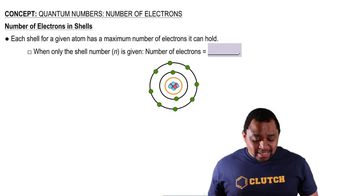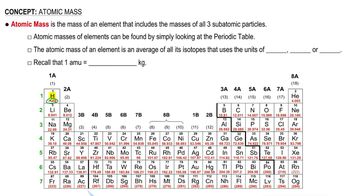Here are the essential concepts you must grasp in order to answer the question correctly.
Charge of an Electron
An electron carries a fundamental charge of approximately -1.6 x 10^-19 coulombs. This negative charge is a basic property of electrons and is essential for understanding electric charge in atoms and molecules.
Recommended video:
Calculating Number of Electrons
To find the number of electrons needed to produce a specific charge, divide the total charge by the charge of a single electron. For a charge of -1.0 C, the calculation involves dividing -1.0 C by -1.6 x 10^-19 C/electron, yielding the total number of electrons required.
Recommended video:
Number of Electrons in Shells
Mass of an Electron
The mass of a single electron is approximately 9.11 x 10^-31 kilograms. To find the total mass of a certain number of electrons, multiply the number of electrons by the mass of one electron, which allows for the conversion of charge into a corresponding mass.
Recommended video:




